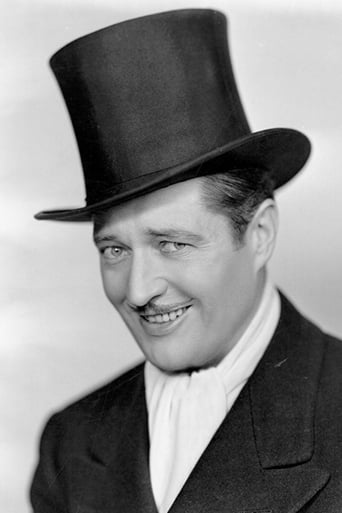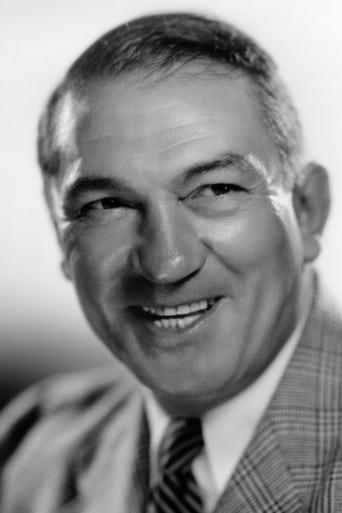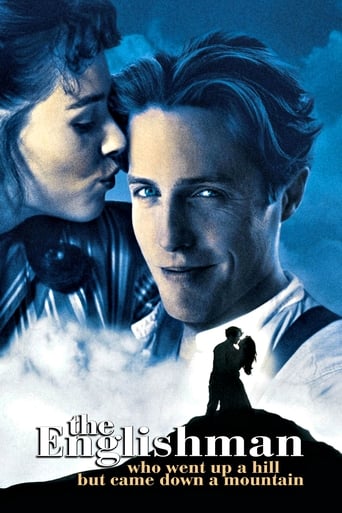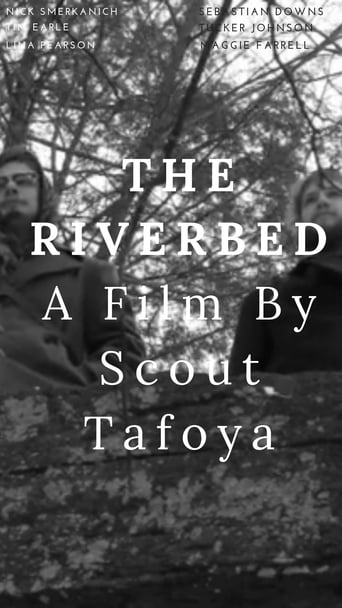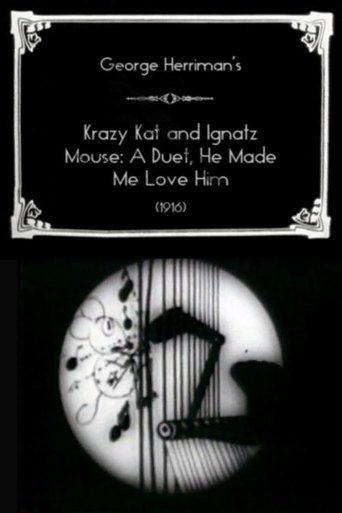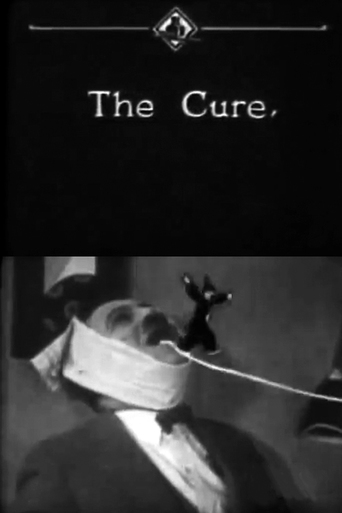
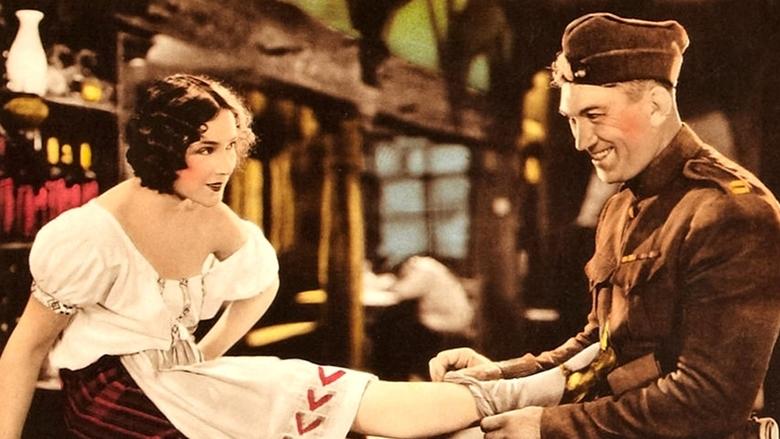
What Price Glory (1926)
U.S. Marine sergeants Quirt and Flagg are inveterate romantic rivals on peacetime assignments in China and the Philippines. In 1917, W.W. I brings them to France, where Flagg, now a captain, takes up with flirtatious Charmaine, inn-keeper's daughter. Of course, Quirt has to arrive and spoil his fun. But the harsh realities of war and the threat of a shotgun marriage give the two men a common cause...
Watch Trailer
Cast


Similar titles
Reviews
What Price Glory (1926) *** (out of 4) Raoul Walsh's version of the popular Maxwell Anderson play about U.S. Marines Flagg (Victor McLaglen) and Quirt (Edmund Lowe), two rivals who soon find themselves in France during WWI but their personal battle is over a beautiful woman (Dolores del Rio) they've both fallen for. There's no question that this here is much better than the John Ford remake with James Cagney but in regards to the war pictures of the silent era, I'd rank this one here a little towards the bottom as it certainly doesn't measure up to stuff like THE BIG PARADE and WINGS. With that said, I think there's enough good things here to make it worth viewing. One of the highlights is certainly the battle sequences that take place towards the end of the movie. I think these are directed with a lot of skill as there's no question that Walsh knew had to build up these scenes and make them tense. Another thing the film has going for it are the performances by the three leads. McLaglen clearly steals the picture since he's got the more memorable character but he has no problem playing the giant brute with a heart. Lowe plays that good-looking fun guy, something he'd do throughout his career. Dolores del Rio wasn't all that believable being a French woman but she too still did a nice job with the part. My biggest problem with this film is that I just never really cared about the love story. This here turned out to be a rather big problem because this really eats up the majority of the running time and I think the anti-war message and war scenes would have been much stronger had the love stuff not brought everything down. I'd also say that the stereotypes were rather boring and it made everything way too easy to figure out. From who gets the girl to which characters will eventually die. Still, WHAT PRICE GLORY is worth watching for the battle scenes and performances.
Fox's answer to MGM's "The Big Parade," and I think it's a markedly superior movie, thanks to better pacing and the rousing direction of Raoul Walsh. He's in his element here: a big war movie with loads of comedy and romance, and three strong personalities at its center. McLaglen was born for this sort of stuff; Lowe wasn't, but he's a very convincing roistering-randy soldier. And Del Rio is so beautiful you don't much care what she does. The horrors of war are amply displayed, and the Hollywood hills doubling for the French countryside work just fine. But what made it such a hit, I guess, was the utterly winning frenemy relationship of Quirt and Flagg. They fight for dames, they hurl insults back and forth, they curse each other with all-too-lip-readable epithets, but you never doubt their loyalty and respect for each other. Maybe there's one skirmish too many--it gets a little repetitive-- but it's much faster-moving than "The Big Parade," and the soldier stereotypes commented on elsewhere don't hurt so much. Also, Leslie Fenton is excellent.
The First World War was a terrible milestone of the last century, a huge catastrophe that destroyed the life of many youngsters. Besides meaning the end of an era, especially the associated implicit innocence, a great influence was the shock that such horrible war cause in the Arts.Such an important happening was depicted in the cinema, during the conflict or after, in very different ways. With various degrees of success, documentaries, dramas, realistic or even funny features were put on the screen. "What Price Glory", a film directed by Herr Raoul Walsh, was one of those films with the First World War in the background.The underlying problem of this film for this German count for not considering this oeuvre as remarkable as others with similar subject is the concept, the personal artistic intentions and way the director faces the story and its surroundings. That is to say, "What Price Glory" is a film that uses the Great War as an excuse not as a whole. The director is interested in especially depicting the love affairs included in the film and a strange comradeship between the two male main characters.And that it would not be a problem if Herr Walsh avoided many stereotyped characters: - Two U.S. Marine sergeants, that is to say, two hard-boiled, cursing and womanizing men: -Herr Victor McLaglen und Herr Edmund Lowe who fight among themselves for the love of a naughty French peasant ( Dame Dolores del Rio ) and from time to time, against the Germans - Stereotyped characters and situations that probably worked in those ancient times but today are dated.The film is a classic representation, a film with a war in background that lacks emotion in spite some interesting war scenes that are not enough to avoid having an enormous sensation of "déjà vu" during its long two hours. That's the worst comment that can be said about any silent film, a feeling of indifference, a sense that it's all the same to the spectator.And now, if you'll allow me, I must temporarily take my leave because this German Count must return to the aristocratic trenches.Herr Graf Ferdinand Von Galitzien http://ferdinandvongalitzien.blogspot.com/
"What Price Glory?" That is the question. Directed by Raoul Walsh, this initial teaming of Victor McLaglen and Edmund Lowe has been said to be Fox Studios' answer to MGM's immensely popular World War story of THE BIG PARADE (1925) starring John Gilbert and Renee Adoree, but while this, along with THE BIG PARADE, goes on record as one of the many top silent movies of all time, WHAT PRICE GLORY (1926), did prove successful. However, due to countless imitations and semi-remakes that followed, either with McLaglen and Lowe, or others, this wartime offering, which combines comedy, witty one liners: "I'd as soon find a skunk in my sleeping bag," to some heavy-handled drama, it has become a movie categorized in terms of cliché, it's best highlighted by a couple of tough Marines shouting profanities at one another "heard" only by experts in lipreading. Labeled a war movie, it consists of two spectacular battlefield sequences, one longer than the other, an attempt to recapture the essence to the horrors of war shown in THE BIG PARADE. Much of the story, however, takes place away from the war-zone while the focus is set upon the two aforementioned roughnecks who fight amongst themselves, particularly when it involves their women, without appearing too theatrical.The first reel centers upon the introduction to the central characters through the course of three years, starting in Peking, China "where professional soldiers serve as legation guards." Sergeant Quirt (Edmund Lowe) is introduced as "hard-boiled non-commissioned officer of the Marines," while Sergeant Flagg (Victor McLaglen), seen getting tattoos placed on his torso, is "soldiering for wages, loving, and fighting for fun." Next introduction is Shanghai Mabel (Phyllis Haver), "who has just divorced the Army and is announcing her engagement to the Marines." The involvement amongst Flagg, Quirt and Mabel moves forward to the Philippines where the Marines become involved with women over there, followed by next segment in 1914 France, then in 1917 as "the Americans join the allies and the old Marines were in the biggest war of all," where Flagg has been elevated to the rank of captain. While in France, where the duration of the story takes place, Flagg meets up with Charmaine (Dolores Del Rio), a beautiful French gal. The two hit it off until Quirt enters the scene.The supporting players consists of William V. Mong as Cognac Pete, Charmaine's father; Elena Jurado as Carmen of the Philippines; Leslie Fenton as Moore, a young lieutenant "who takes his war seriously"; Sammy Cohen as Private Pipinsky; and Barry Norton as Private Lewisohn, the "mama's boy" soldier, among others. What, no El Brendel? While Fox might have borrowed Renee Adoree from THE BIG PARADE fame to play Charmaine, it was offered to the Mexican born Dolores Del Rio making one of her first Hollywood screen appearances. Coming close to the physical resemblance to Adoree's character, Del Rio succeeds solely due to the fact that her Mexican accent cannot be heard in a silent film.Based on the popular play by Laurence Stallings and Maxwell Anderson, the movie version to WHAT PRICE GLORY, which runs for two solid hours, is perfectly cast by a fine trio of McLaglen, Lowe and Del Rio, actors not necessarily known for their work in silent movies. The success to WHAT PRICE GLORY inspired three sequels produced during the early sound era with McLaglen and Lowe reprising their roles: THE COCK-EYED WORLD (1929), with Lili Damita; WOMEN OF ALL NATIONS (1931), with Greta Nissen; and HOT PEPPER (1933), with Lupe Velez, all forgotten curios due to lack of revivals. While a sound remake of WHAT PRICE GLORY featuring McLaglen and Lowe during the 1930s or early 1940s might have seemed a logical choice, a remake, however, was eventually made, but starring the miscast combination of James Cagney and Dan Dailey for 20th Century-Fox. In spite of John Ford's 1952 direction, it fails to come close to the caricatures immortalized by McLaglen and Lowe.WHAT PRICE GLORY became the introductory movie presented on the 12-week public broadcasting series of "The Silent Years" (1975) hosted by Lillian Gish (WNET, Channel 13, in New York City), with WHAT PRICE GLORY accompanied by William Perry piano score from the Paul Killiam collection. The print presented in this series was used for the 1996 limited time only video distribution through Critics Choice Masterpiece Collection. American Movie Classics cable channel offered a rare showing to WHAT PRICE GLORY in June 1998 as part of its annual film preservation series, this time accompanied by the original Fox Movietone synchronized musical score with the theme song of "Charmaine" composed by Erno Rapee and Lew Pollack, in place of Perry's expert piano playing.WHAT PRICE GLORY may be something from the time capsule, but any movie that introduces its female co-stars with the camera's focus on their "seated bottom" instead of their charming faces can't be all bad. What price glory!! (***)


